AMD Releases Opteron 6100 Series Processors For Server Market
Components & Peripherals News
Zewde Yeraswork
AMD on Monday launched several 12-core and 8-core server processors under its Opteron 6100 Series product family through its OEM and system builder partners.
AMD said the Opteron 6100 chips address low-power consumption requirements and target SMBs, public sector and enterprise users with a strong value proposition in terms of performance-per-price.
AMD’s Opteron 6132 HE chip includes 8 cores running at 2.2 GHz with a 65 watt thermal design point (TDP), while the Opteron 6140 includes 8 cores running at 2.6 GHz with an 80 watt TDP. Among the new 12-core Opteron processors, AMD’s Opteron 6166 HE runs at a frequency of 1.8 GHz and a 65 watt TDP, the Opteron 6176 runs at 2.3 GHz and an 80 watt TDP, and the Opteron 6180 SE runs at 2.5 GHz and a 105 watt TDP.
AMD said its OEM partners in the server space — including Acer, Dell, and HP — will launch new and refreshed systems featuring Opteron 6100 chips sometime in the first quarter.
John Fruehe, director of product marketing for Servers and Workstations at AMD, on Friday spoke to CRN about opportunities AMD’s Opteron server processors bring to channel resellers.
«The 12-core and 8-core Opteron chips are all going to drop into the platforms the guys in channel are buying today,» Fruehe said. «If you’re a VAR and you’re reselling name-brand platforms like HP and Dell, all the OEMs you’re purchasing from today have the ability to take advantage of these platforms. If you’re on the system builder side you have products available today that are going to drop into those platforms, and it’s very easy to upscale the platform you’re already on today and get the same performance at the same or lower price.»
Fruehe said AMD’s performance in the market last year did not reflect its advantage in technology, but this year will be different as AMD’s partners are all on board with its current platform.
«The last year has been a pretty tough year for us,» he said. «When customers are unsure they tend to go with what they’ve been buying. AMD has had to go through a product transition during a tough economy, and that’s a tough combination. But I don’t get to control the macroeconomic conditions in the world.»
In particular, AMD’s market share fell 33 percent in the second quarter of 2010. However, Fruehe said AMD has dealt with the most difficult aspect of setting up its platform last year and that its competitor will have to do the same this year.
Next: AMD Anticipates Its Rival’s Challenges
«From an OEM perspective or a channel perspective, we have everybody on the new platform, so that when the new processors come up there are fewer things that have to happen to get the product to market,» Fruehe said. «Meanwhile, our competitors will have to go through product transition that AMD had to go through last year. We’ve done a lot of the heavy lifting in the platform, and our competition didn’t have to do that last year.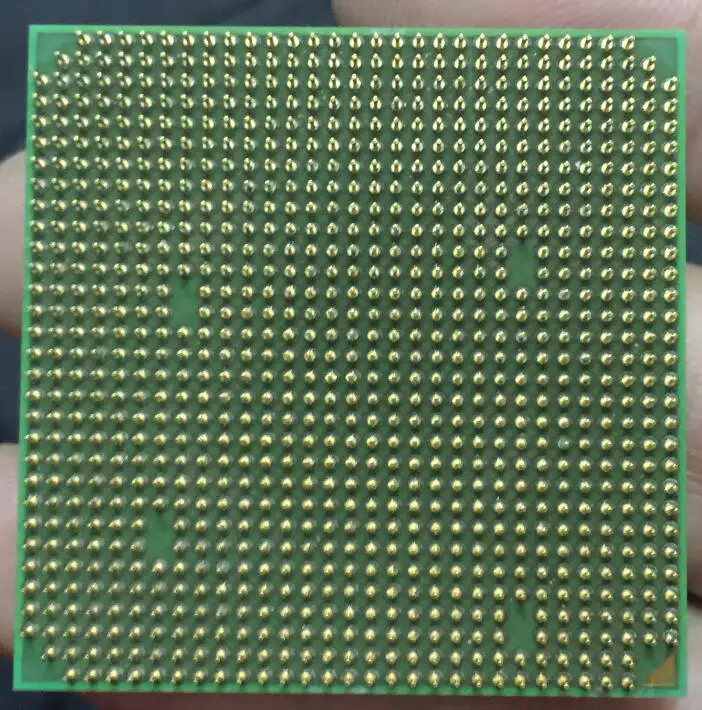 They got some benefit out of that, but they’ll have to do that this year.»
They got some benefit out of that, but they’ll have to do that this year.»
AMD says the Opteron 6100 series is geared toward Web serving, cloud computing and virtualization for verticals including financial services, database operation and high-performance computing.
Fruehe said servers running AMD’s new chips outperform systems based on Intel’s Intel Xeon processors in several key benchmark tests including SPECint_rate2006, SPECfp_rate2006, and TPC-C Value. He also said AMD’s server products offer superior pricing compared to comparable Intel offerings.
«We’re priced extremely well relative to the competition,» Fruehe said. «AMD’s top end 2P Opteron 6100 processors are 8 to 10 times less expensive than Intel’s top-end 2P Xeon X56 top processors, and they’re about 10 to 30 percent faster. Across the board, if you stack up Intel’s Xeon line and AMD’s Opteron line you find better value from AMD — a lower price and better performance processor-to-processor.»
In addition, Fruehe said AMD’s Opteron line offers improved memory through-put and its 8-core processors actually provide 1. 5 megabytes of cache per core, while the 12-core processors feature 1 megabyte cache per core, making the 8-core chips suited to certain compute-intensive applications. Fruehe said the 12-core chips also include lower clock speeds, but releasing both 8-core and 12-core options at the same time allows AMD to cover both corners of the market.
5 megabytes of cache per core, while the 12-core processors feature 1 megabyte cache per core, making the 8-core chips suited to certain compute-intensive applications. Fruehe said the 12-core chips also include lower clock speeds, but releasing both 8-core and 12-core options at the same time allows AMD to cover both corners of the market.
Fruehe also said AMD’s Bulldozer APU core architecture, part of the AMD Fusion integrated graphics platform that launched last month, is on track to go into production in late Q2 and appear in the market in Q3 after having been sampled in Q4′ 2010. Fruehe said AMD will sell Bulldozer products to system builders prior to the launch.
Based on the Bulldozer architecture, AMD’s 16-core Interlagos APU and 8-core Valencia APU will offer a 50 percent improvement in memory throughput and a 50 percent improvement in compute throughput, according to AMD. Fruehe said those enhancements are due in part to the inclusion of more cores on the same 32-nm die, amounting to 33 percent more cores available at the same thermal and power ranges. In addition, each Bulldozer-based product will feature a 256-bit floating point and an AMD Turbo core with a performance boost of up to 500 MHz, Fruehe said.
In addition, each Bulldozer-based product will feature a 256-bit floating point and an AMD Turbo core with a performance boost of up to 500 MHz, Fruehe said.
Next: AMD’s Product Timeframe And Pricing
Fruehe said AMD’s processor products are on an 8-to-12 month product refresh cycle and that the Opteron 6100 series refresh will be followed by enhancements to AMD’s entry-level server products, including the Opteron 4100 series processors.
AMD’s Opteron 6166 HE is available through its partners at a starting price of $873, while the Opteron 6176 starts at $1,265, the Opteron 6180 SE starts at $1,514, the Opteron 6132 HE starts at $591, and the Opteron 6140 starts at $989.
Learn More:
Opteron 6100 |
AMD server processors |
8-core |
12-core |
AMD Bulldozer |
Components and Peripherals |
CPUs/GPUs
AMD Opteron 6100 Series review
Price when reviewed
For the first time in years, AMD has managed to trump Intel on the fundamental specification of a new processor. Launched in March, the “Magny-Cours” Opteron 6100 Series has eight or 12 cores, beating Intel’s Xeon 5600 series’ maximum of six cores. This high core count even stomps on the latest eight-core Xeon 6500 and 7500 “Nehalem-EX” chips that were announced shortly afterwards. We also have the first Opteron 6100 production rack server in the lab, courtesy of Boston Ltd. The GP 1120-T is equipped with a pair of 6174 modules, and we put it through a range of benchtests to see how it stacks up against the Xeon 6500, 7500 and 5600.
Launched in March, the “Magny-Cours” Opteron 6100 Series has eight or 12 cores, beating Intel’s Xeon 5600 series’ maximum of six cores. This high core count even stomps on the latest eight-core Xeon 6500 and 7500 “Nehalem-EX” chips that were announced shortly afterwards. We also have the first Opteron 6100 production rack server in the lab, courtesy of Boston Ltd. The GP 1120-T is equipped with a pair of 6174 modules, and we put it through a range of benchtests to see how it stacks up against the Xeon 6500, 7500 and 5600.
Compared with the Xeon 5600, the 6100 processor choices have been greatly simplified as they all have the same 12MB of L3 cache, the same HyperTransport speed and support for 1,333MHz DDR3 memory. All you need to decide is whether you want eight or 12 cores, whether you want one, two or four of them and the clock speed.
The Xeon 5600 offers 12 processor models, as opposed to AMD’s ten. However, along with three different QPI speeds, the 5600 offers a wide range of clock speeds, from 1.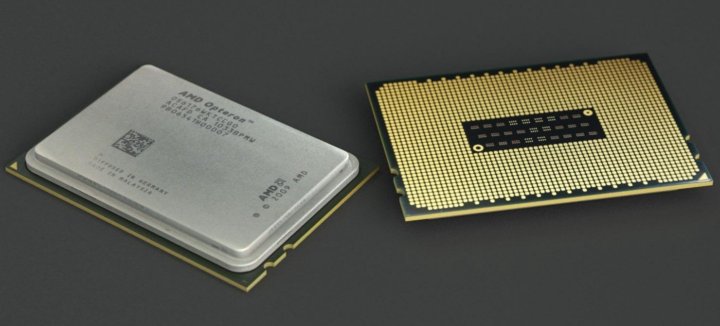 86GHz up to 3.33GHz, four or six cores, five different power ratings, varying HT and Turbo Boost support and different support for 800MHz, 1,066MHz and 1,333MHz memory speeds.
86GHz up to 3.33GHz, four or six cores, five different power ratings, varying HT and Turbo Boost support and different support for 800MHz, 1,066MHz and 1,333MHz memory speeds.
Along with a simplified product line, AMD’s product positioning puts the 6100 series directly into competition with the Xeon 5600 market and also takes a swipe at the 7500s. Intel has applied Itanium-like pricing to Xeon 6500 and 7500, so only those businesses with deep pockets will be able to afford them. The 6100 supports 1P, 2P and 4P systems and AMD’s pricing structure removes the cost barrier that the tiered 1000, 2000 and 8000 Opteron line-up imposed. Previously a 4P system required an expensive 8000 series processor to work, and a 2P required at least a 2000 series. The 6100 series removes that artificial barrier – they’ll work in 1P, 2P and 4P machines, for a clear upgrade path as long as you think about your requirements ahead of time and buy a suitable chassis.
AMD’s prices for its 12-core processors starts at $744 (around £490) for the 1. 9GHz 6164 HE, going up to $1,386 (around £913) for the top-of-the-range 2.3GHz 6176 SE. This means that many businesses that traditionally go for 2P servers can now consider stepping up to 4P systems and some cost-reducing server consolidation. This leaves the Opteron 8000 hanging out to dry, as it supports 2P, 4P and 8P systems, and interest in the bigger boxes is showing a marked decline. AMD said it would continue to produce these processors but admitted that from a performance perspective there wasn’t much sense in buying them.
9GHz 6164 HE, going up to $1,386 (around £913) for the top-of-the-range 2.3GHz 6176 SE. This means that many businesses that traditionally go for 2P servers can now consider stepping up to 4P systems and some cost-reducing server consolidation. This leaves the Opteron 8000 hanging out to dry, as it supports 2P, 4P and 8P systems, and interest in the bigger boxes is showing a marked decline. AMD said it would continue to produce these processors but admitted that from a performance perspective there wasn’t much sense in buying them.
On the design front, the 6100 stays with the same 45nm fab that’s used for the Xeon 6500 and 7500. Only the Xeon 5600 has dropped down to a 32nm manufacturing process. Cramming in 12 cores has resulted in a larger rectangular processor, requiring AMD to abandon Socket F. The new Socket G34 means that moving to Opteron 6100 will require a complete upgrade, as they’re not backward-compatible.
The 12-core Opteron in action
Read the full review of Boston’s GP 1120-T, complete with two 12-core Opterons
The HyperTransport speed gets a bandwidth boost from 4.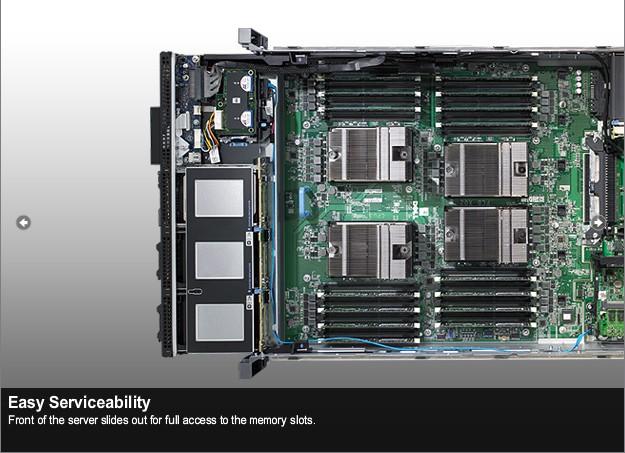 8GT/sec to 6.4GT/sec. This is a common feature across all 6100 models and makes for a less confusing choice compared with the Xeon 5600 range, which offers three different QPI speeds. AMD’s new Direct Connect Architecture (DCA) 2 brings it in line with Intel’s QPI, as it adds a fourth HyperTransport link to reduce the number of hops between processors. Previously, the three links in DCA 1 meant processors in 4P systems had to make more than one hop to reference memory controlled by another processor.
8GT/sec to 6.4GT/sec. This is a common feature across all 6100 models and makes for a less confusing choice compared with the Xeon 5600 range, which offers three different QPI speeds. AMD’s new Direct Connect Architecture (DCA) 2 brings it in line with Intel’s QPI, as it adds a fourth HyperTransport link to reduce the number of hops between processors. Previously, the three links in DCA 1 meant processors in 4P systems had to make more than one hop to reference memory controlled by another processor.
DCA 2 also doubles the number of memory controllers per processor to four, allowing each socket to support up to 12 DIMMs. This gives the 6100 the edge over the Xeon 5600, which can support only up to nine DIMMs per socket.
The 6100 series is more consistent with memory compatibility, as 800MHz, 1,066MHz and 1,333MHz speeds are supported by all models. They will also be able to handle low-voltage memory when it finally comes out, although this feature is present across the Xeon 5600 series.
Next up is CoolSpeed technology, which changes the way the management controller talks to the processors. Previously, this had to go over the north and south bridges and HyperTransport links, but it now communicates directly. It offers dynamic control over p-states and can switch off other components such as memory controllers when in idle.
AMD claims some impressive power figures, saying a 2P system can consume as little as 60W in idle. The C1E (enhanced hold-state) extends the sleep state to common parts of the processor such as the HyperTransport and memory controller with a view to making more savings when in idle. We didn’t see this with the Boston system, however; with the OS ticking over, we saw power consumption fall no lower than 163W.
Specifications |
|
|---|---|
| Fab process | 45nm |
| HyperTransport frequency | 6,400MHz |
Five new products in the AMD Opteron™ 6100 family that meet growing demand for reduced power consumption
|
watts per dollar.
During the first quarter, major AMD partners including Acer, Dell and HP will launch new or upgrade existing servers based on the new AMD Opteron processors with 12 and 8 cores. The processors will become available for the channel at the same time. «The new server processors deliver unprecedented performance,» says Patrick Patla, vice president and general manager of AMD’s Server business. «Last year, when we launched the AMD Opteron 6000 series platform, we eliminated the 4P tax.» and meet the market demand for increased performance per dollar and per watt Our customer testing and feedback confirms these improvements, and five new models – and rave reviews – prove we continue to deliver on our promises «. |
2.3GHZ | 12 | |
| 6180 SE | 105 | 2.5GHZ | 12 |
| AMD Opteron 61xx Processor | Calculated heat output | clock frequency |
Number of cores |
| 6132 HE | 65 | 2.2 GHz | 8 |
| 6140 | 80 | 2.6 GHz | 8 |
| 6166 HE | 65 | 1.8 GHz | 12 |
| 6176 | 80 | 2.3 GHz | 12 |
| 6180 SE | 105 | 2.5 GHz | 12 |
- Two new AMD Opteron HE processors address the market’s need for highly scalable, energy-efficient systems that are particularly well suited to Web serving, virtualization, and cloud computing applications.
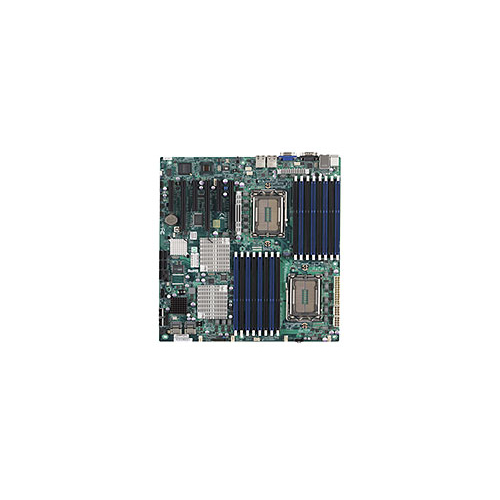
- The new AMD Opteron SE processor helps improve system performance in key sectors such as HPC, financial services, databases, and virtualized data centers.
- Like the upcoming 16-core AMD Bulldozer-based Opteron processors, these chips are socket-compatible with the AMD Opteron 6000 series platform.
- AMD Opteron 6000 Series based systems equipped with the new AMD Opteron processors are already available from OEMs and system builders such as Acer, Appro, Cray Inc., Colfax, Dawning, Dell, HP, Microway, NCS Technologies, Inc., Nor-Tech, Penguin, SGI, Silicon Mechanics and ZT Systems.
- Servers based on the AMD Opteron 6000-series processor platform deliver superior performance, cost and power efficiency, outperforming Intel Xeon processor-based servers in numerous server tests, including SPECint® _rate2006, SPECfp® _rate2006, and TPC-C Value (price/ tpmC).1 Learn more about these server tests here.
- Dual-socket servers using these latest AMD Opteron™ processors outperform servers based on the Intel Xeon 5680 («Westmere») processors in eight key server tests2:
— SPECint®_rate20061
— SPECint®_rate_base20061
— SPECfp®_rate20061
— SPECfp®_rate_base20061
— SPECjbb®20052
— TPC-C Price Value (Value/TpmC)1
— TPC-C Price Value (Value/TpmC)1
— SPECpower™_ssj2008 power consumption
- The scalability of the core and the efficient architecture of the AMD Opteron 6000 series platform helped the new Dell PowerEdge C6145 servers set a performance record for 2U servers.




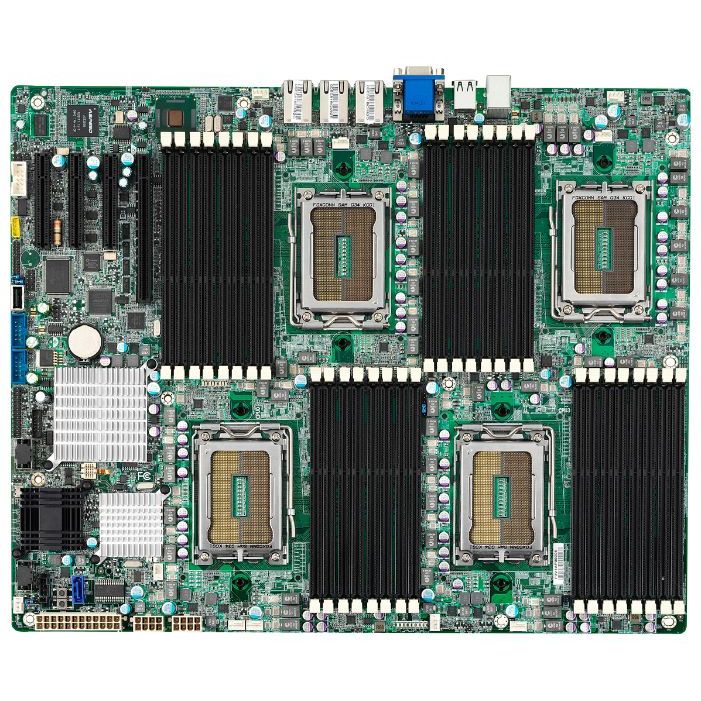 This quarter, major AMD partners including Acer, Dell and HP will launch new systems or upgrade systems based on AMD Opteron 6000 series processors with these new 12- and 8-core AMD Opteron processors.
This quarter, major AMD partners including Acer, Dell and HP will launch new systems or upgrade systems based on AMD Opteron 6000 series processors with these new 12- and 8-core AMD Opteron processors.